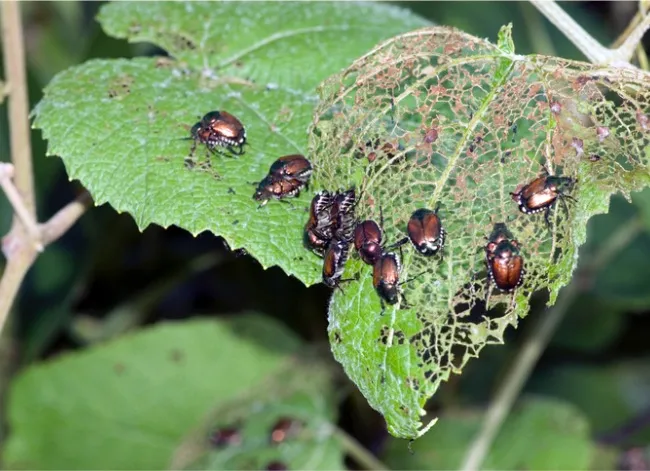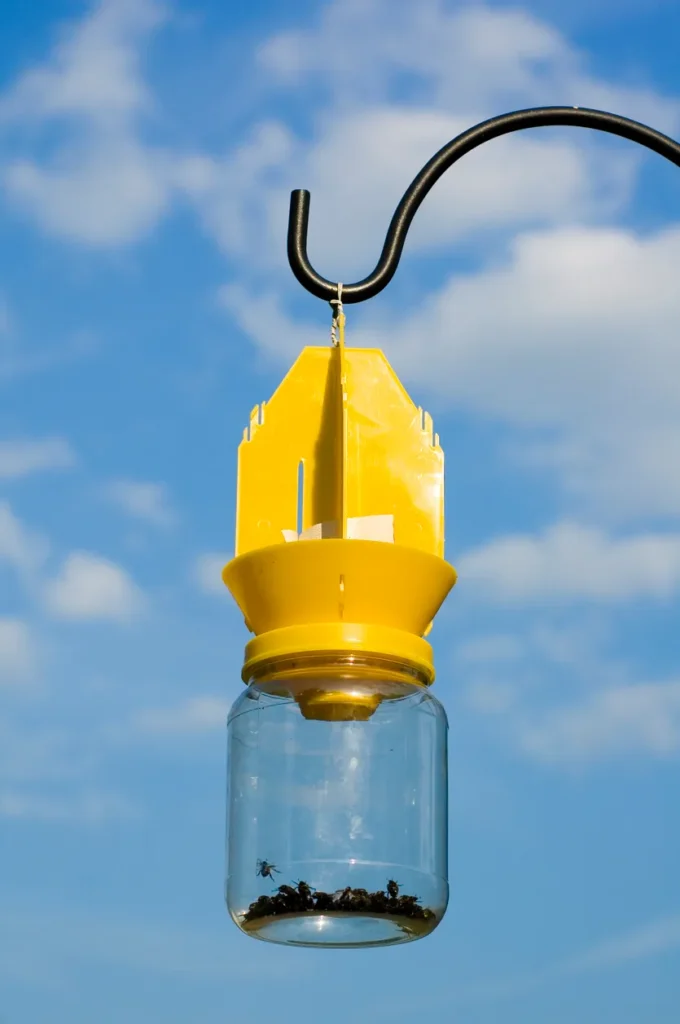Japanese beetles are notorious for their destructive feeding habits. Their larvae, known as grubs, damage lawns and plants, while adults feast on a variety of garden favorites like roses, grapes, and raspberries. Gardeners often find themselves battling these pests during peak summer months. Fortunately, there are many natural, effective ways to control and get rid of Japanese beetles. Whether you are dealing with a small infestation or a widespread problem, these strategies will help you protect your garden and keep it healthy.
Home Advice You Can Trust
The Japanese beetle (Popillia japonica) is an invasive species that has been causing damage in gardens and yards across North America since its arrival in the early 1900s. These beetles are easily recognizable, with their shiny green bodies and copper-colored wings. While their colorful appearance may seem appealing, their appetite is anything but. They can cause serious damage to a variety of plants, especially during peak feeding periods.
To successfully eliminate Japanese beetles from your garden, it’s essential to employ a range of methods. This guide will take you through nine strategies you can use to fight back against these destructive pests.
Before You Begin
1. Signs of Japanese Beetle Infestation

Before you can control or eradicate Japanese beetles from your garden, you need to identify the signs of an infestation. These beetles are active from late June through early September, so you’ll want to be on the lookout during this time. Here’s how to spot the problem:
- Skeletonized Leaves: One of the clearest signs of a Japanese beetle infestation is leaves that have been chewed until only the veins remain. This gives plants a lace-like appearance, particularly on trees like linden, rose bushes, and grapevines.
- Damaged Flowers and Fruits: Japanese beetles are also attracted to flowering plants. You may notice petals or fruit skins being chewed away. Roses and fruit-bearing plants are especially vulnerable.
- Presence of Beetles: Adult beetles are easiest to spot in the daytime, especially in the early morning or late evening. They tend to congregate in large numbers, making it easier to identify a problem.
2. Protect Pollinators by Using Natural Methods for Japanese Beetles Removal
When dealing with Japanese beetles, it’s important to use methods that will not harm beneficial pollinators like bees, butterflies, and ladybugs. Insecticides and chemical treatments can kill or harm these vital creatures, so opt for natural alternatives that won’t disrupt the ecosystem in your garden.
How to Get Rid of Japanese Beetles
There are several effective, non-toxic methods to deal with Japanese beetles. Let’s dive into the best ways to rid your garden of these destructive pests.
1. Make a Homemade Japanese Beetle Spray
One of the easiest and most affordable ways to control Japanese beetles is by making your own beetle spray. A simple homemade solution can help you target and kill the beetles without harming your plants or the environment.
Ingredients:
- 1 tablespoon of dish soap
- 1 quart of water
Instructions:
Mix the dish soap and water in a spray bottle, then shake gently to combine. Spray the mixture directly on the beetles when you spot them on your plants. The dish soap will break down their exoskeletons and kill them. This method works best during the cooler parts of the day, like early morning or evening, when beetles are less active.
This method is highly effective for killing adult beetles, but it’s important to monitor your garden regularly and repeat the treatment if necessary.
2. Pick the Japanese Beetles Off Plants by Hand
If you don’t want to use any kind of spray, handpicking the beetles off your plants is a simple and effective option. This method is especially useful for smaller infestations.
How to Do It:
- Wear gloves and gently pick the beetles off the plants. You can also use a small container or jar to collect them.
- Drop the beetles into a bucket of soapy water to drown them.
This approach works best when beetles are more sluggish, such as early in the morning or late in the evening. It requires patience, but it’s a non-toxic way to reduce the beetle population in your garden.
3. Spray the Affected Plants with Neem Oil
Neem oil is a natural pesticide that can be used to control a variety of garden pests, including Japanese beetles. Derived from the neem tree, this oil is non-toxic to humans, animals, and beneficial insects when applied correctly.
How to Use Neem Oil:
- Dilute the neem oil according to the package instructions (usually 2 tablespoons per gallon of water).
- Spray the solution directly on the plants, focusing on the leaves and stems where beetles are likely to feed.
Neem oil works by disrupting the feeding and reproductive systems of pests, making it an excellent tool in reducing the beetle population. It’s also useful in preventing new infestations as it has residual effects.
4. Set Beetle Traps Away from Targeted Plants

Beetle traps are available at most garden centers and can be used to lure and capture Japanese beetles. However, it’s essential to use them strategically. If placed too close to your plants, the traps can attract more beetles to your garden.
How to Use Beetle Traps:
- Place the traps several feet away from your plants or garden areas you want to protect.
- Check the traps daily and empty them when they fill up.
While beetle traps can be effective, they should be used in conjunction with other methods to prevent beetles from returning to your plants.
5. Use Row Covers During Peak Feeding Period
Row covers are a great way to protect your plants from beetles, especially when they are most active. These breathable, fabric coverings act as a physical barrier, preventing beetles from reaching your plants.
How to Use Row Covers:
- Drape the row covers over your plants during the peak feeding season, typically in July and August when beetles are most active.
- Make sure the covers are secure around the edges to prevent beetles from sneaking in.
While row covers are very effective at keeping beetles out, it’s important to remove them during flowering periods to allow for pollination.
6. Bring in Parasitic Nematodes to Eat Japanese Beetle Grubs
Japanese beetles begin their life cycle as grubs in the soil, where they feed on grassroots. By introducing beneficial nematodes into your soil, you can target and eliminate the grub population before they can turn into adult beetles.
How to Use Parasitic Nematodes:
- Purchase nematodes from your local garden center or online.
- Apply them to the soil according to the package instructions, usually in late summer or early fall when the grubs are active.
The nematodes infect the grubs, killing them before they can mature and cause damage. This method reduces the beetle population in the following year.
7. Plant Geraniums Near the Plants You Want to Protect

Geraniums are known to repel Japanese beetles naturally. These flowers emit a scent that beetles find unpleasant, making them an excellent companion plant for your other garden favorites.
How to Use Geraniums:
- Plant geraniums near roses, grapes, or other plants that are vulnerable to Japanese beetles.
- The beetles will be less likely to approach these plants due to the scent of the geraniums.
This is a simple, low-maintenance solution that can help keep beetles at bay while adding beauty to your garden.
8. Prune Rose Buds and Treat Rose Bushes Before They Bloom
Japanese beetles are particularly attracted to blooming roses. To prevent beetles from attacking your rose bushes, you can prune the buds and treat the bushes before they have a chance to bloom.
How to Prune and Treat Roses:
- Prune any rose buds before they open to prevent beetles from being attracted to them.
- Use neem oil or insecticidal soap to treat the bushes before the buds open. This will help deter beetles from feeding on your roses.
This method is most effective when used in combination with other control strategies, such as hand-picking and using row covers.
9. Avoid Grouping Plants That Attract Japanese Beetles Together in Your Garden
Japanese beetles are attracted to certain types of plants, including roses, grapes, raspberries, and linden trees. One way to reduce the chance of a large infestation is to avoid planting these beetle-friendly plants near each other.
How to Use Companion Planting:
- Space out plants that are particularly attractive to Japanese beetles.
- Consider planting beetle-resistant varieties of flowers and vegetables, such as marigolds, garlic, and chives.
By spreading out beetle-friendly plants, you reduce the likelihood that beetles will congregate in one area of your garden.
Final Thoughts
Japanese beetles are a persistent problem, but they are not impossible to control. By using a combination of natural methods—such as making your own beetle spray, handpicking beetles, using neem oil, and planting geraniums—you can reduce their impact and protect your garden.
Don’t forget to keep an eye on your plants and implement preventative measures, such as using row covers and introducing nematodes to the soil.
With these strategies in place, your garden will thrive, and you’ll be able to enjoy your plants without the constant worry of beetle damage.
FAQs
Can I use chemical pesticides to control Japanese beetles?
While chemical pesticides are effective, they can harm beneficial insects like bees and ladybugs. It’s best to use natural, non-toxic methods whenever possible.
When is the best time to apply neem oil?
The best time to apply neem oil is in the early morning or late evening when bees and other pollinators are less active.
How can I prevent Japanese beetles from coming back next year?
Using preventive methods like applying nematodes to the soil, removing fallen beetles, and using row covers will help reduce the beetle population in future years.
Are beetle traps effective?
Beetle traps can attract beetles to your garden, so they should be placed away from your main plants. They can help reduce the number of beetles, but they should not be relied upon as the only method.
Can I use geraniums to protect my garden from beetles?
Yes, geraniums can naturally repel Japanese beetles due to their scent. Planting them near vulnerable plants is a great way to keep beetles at bay.




